Amir Fazlollahi
Quantitative Susceptibility Mapping through Model-based Deep Image Prior (MoDIP)
Aug 18, 2023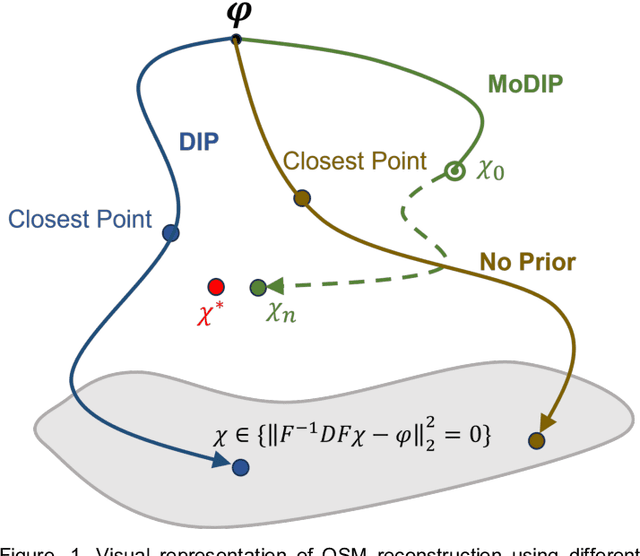
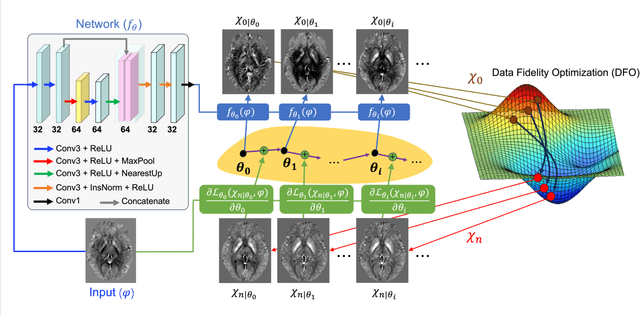
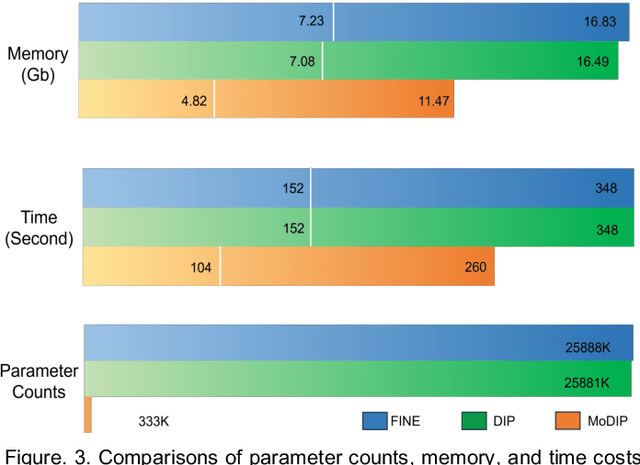
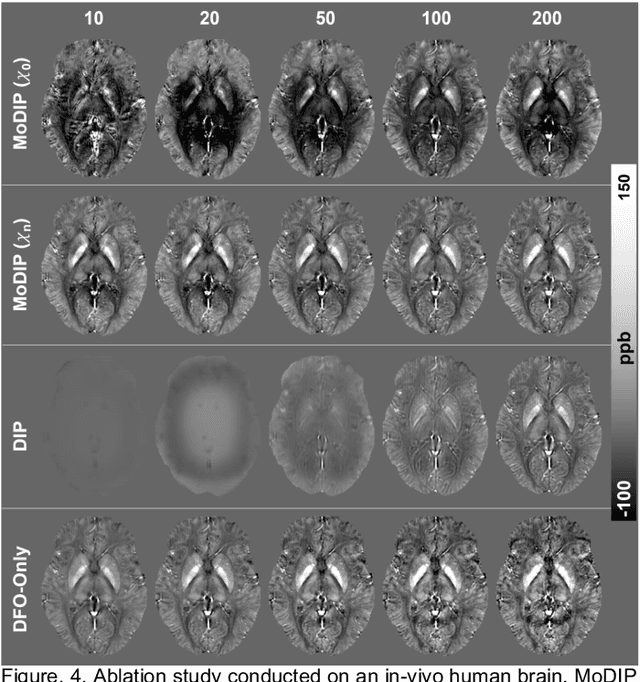
Abstract:The data-driven approach of supervised learning methods has limited applicability in solving dipole inversion in Quantitative Susceptibility Mapping (QSM) with varying scan parameters across different objects. To address this generalization issue in supervised QSM methods, we propose a novel training-free model-based unsupervised method called MoDIP (Model-based Deep Image Prior). MoDIP comprises a small, untrained network and a Data Fidelity Optimization (DFO) module. The network converges to an interim state, acting as an implicit prior for image regularization, while the optimization process enforces the physical model of QSM dipole inversion. Experimental results demonstrate MoDIP's excellent generalizability in solving QSM dipole inversion across different scan parameters. It exhibits robustness against pathological brain QSM, achieving over 32% accuracy improvement than supervised deep learning and traditional iterative methods. It is also 33% more computationally efficient and runs 4 times faster than conventional DIP-based approaches, enabling 3D high-resolution image reconstruction in under 4.5 minutes.
Instant tissue field and magnetic susceptibility mapping from MR raw phase using Laplacian enabled deep neural networks
Nov 16, 2021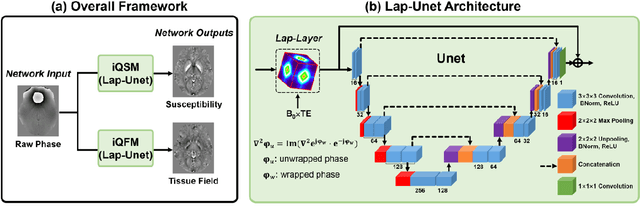

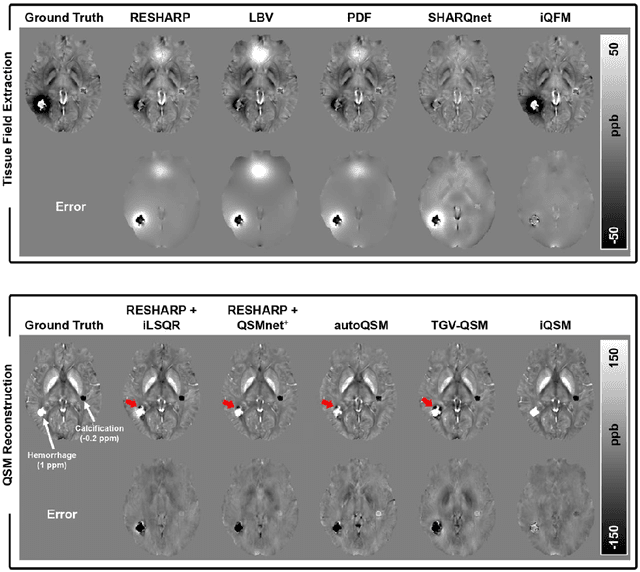

Abstract:Quantitative susceptibility mapping (QSM) is a valuable MRI post-processing technique that quantifies the magnetic susceptibility of body tissue from phase data. However, the traditional QSM reconstruction pipeline involves multiple non-trivial steps, including phase unwrapping, background field removal, and dipole inversion. These intermediate steps not only increase the reconstruction time but amplify noise and errors. This study develops a large-stencil Laplacian preprocessed deep learning-based neural network for near instant quantitative field and susceptibility mapping (i.e., iQFM and iQSM) from raw MR phase data. The proposed iQFM and iQSM methods were compared with established reconstruction pipelines on simulated and in vivo datasets. In addition, experiments on patients with intracranial hemorrhage and multiple sclerosis were also performed to test the generalization of the novel neural networks. The proposed iQFM and iQSM methods yielded comparable results to multi-step methods in healthy subjects while dramatically improving reconstruction accuracies on intracranial hemorrhages with large susceptibilities. The reconstruction time was also substantially shortened from minutes using multi-step methods to only 30 milliseconds using the trained iQFM and iQSM neural networks.
 Add to Chrome
Add to Chrome Add to Firefox
Add to Firefox Add to Edge
Add to Edge